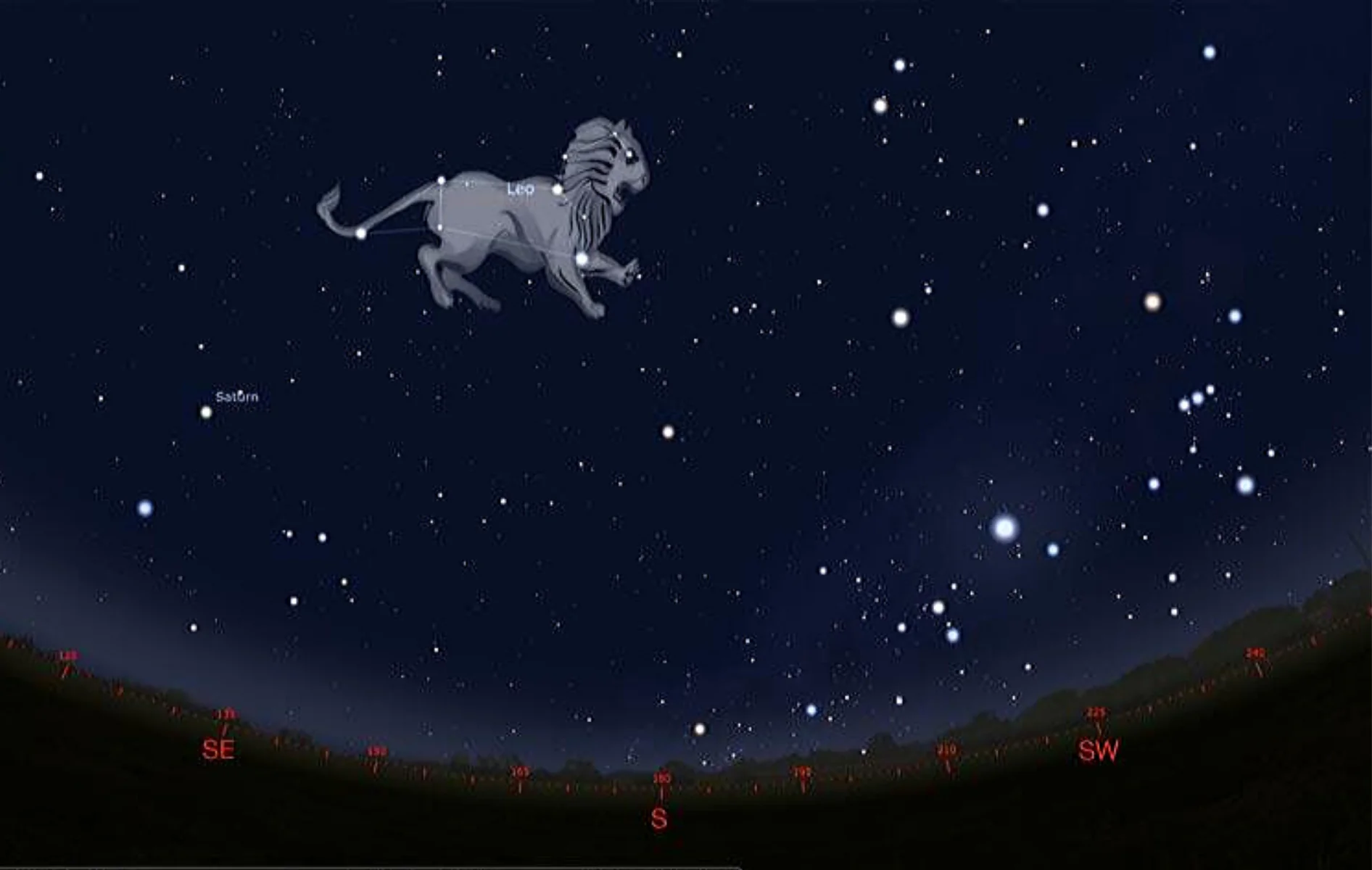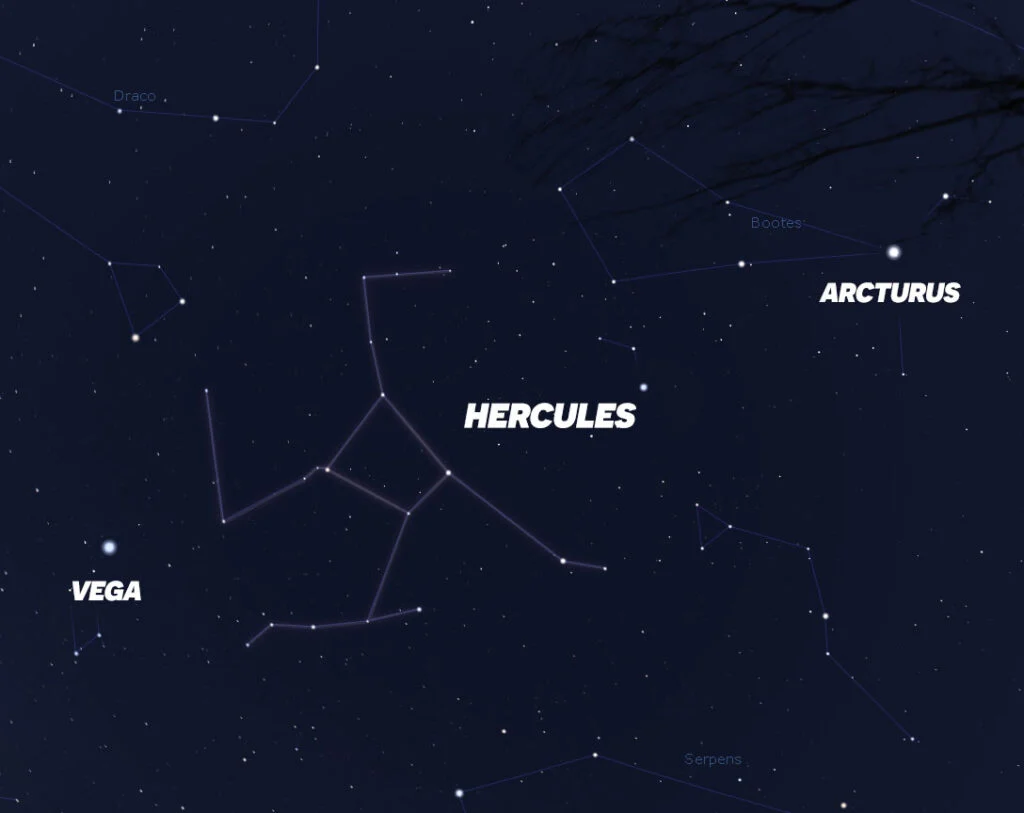At night, thousands of stars light up the sky, but they are not just scattered randomly. Since ancient times, people have grouped them into patterns called constellations. These are clusters of stars that form recognizable shapes in the sky. Today, 88 constellations are officially recognized. People have observed them for thousands of years. Ancient astronomers gave constellations their names and created myths about them. Some are so well-known that even people who are not interested in astronomy can recognize them. Let’s explore the most famous and interesting ones.
General Facts About Constellations
Ancient civilizations – including the Egyptians, Sumerians, and Greeks – identified constellations. They used them for navigation at sea and to track the seasons. For example, the appearance of Orion in the sky signaled the approach of winter, while Scorpius was associated with heat.
Because of Earth’s rotation, different constellations appear and disappear during different seasons. Orion, for example, is visible in winter, while Cygnus can be seen in summer. Why are some constellations more popular than others? Some are well-known because they are easy to find. The Big Dipper, for example, is recognizable even to children. Others became famous because of myths or their connection to astrology.
The Most Famous Constellations – Names
Some constellation names are familiar even to those who have never studied astronomy. They are bright, easy to recognize, and often mentioned in myths. Some are visible year-round, while others appear only in certain seasons. Let’s explore the most famous ones and what makes them special.
Ursa Major
One of the most famous star patterns. It is easy to identify by its seven bright stars forming a “ladle” shape. The two outer stars of the ladle – Dubhe and Merak – point to the North Star (Polaris). In Chinese culture, this pattern was seen as a celestial spoon, while in Slavic traditions, it was known as the Great Wagon.

Ursa Minor
Some constellation names are always recognized. One of them is the Little Dipper. Its main star is Polaris, which remains nearly fixed and always points north. In the past, sailors, caravans, and travelers used it for navigation.

Orion
When talking about constellation names, Orion is one of the first to be mentioned. It can be recognized by the three bright stars forming Orion’s Belt – Alnitak, Alnilam, and Mintaka.
Brightest Stars:
- Betelgeuse – a red supergiant that may explode as a supernova soon. Watch its flickering – the explosion could happen any time!
- Rigel – one of the brightest stars in the night sky.
In myths, Orion was a mighty hunter killed by Scorpius. That is why the two constellations are never visible in the sky at the same time.

Cassiopeia
This constellation forms the shape of a “W” or “M.” It is best seen in fall and winter. According to legend, Cassiopeia was a queen who angered the gods with her arrogance. As punishment, she was placed in the sky sitting upside down on her throne. It is also one of the best guides for finding Polaris.

Leo
Looking for constellations in the spring sky? Leo is one of them. Its brightest star, Regulus, is among the top 25 brightest stars in the sky. Another important star, Denebola, forms Leo’s “tail.” Leo was known in Babylonian times. In Greek mythology, it was the lion defeated by Hercules.

Scorpius
Scorpius is one of the main symbols of the summer sky. It is easy to recognize by its bright red star Antares. This star is so massive that if it replaced the Sun, its surface would reach Mars’ orbit. According to legend, Scorpius killed Orion. Their constellations are often mentioned together, but they never appear in the sky at the same time.

Cygnus
Cygnus, also known as the Northern Cross, is visible in the summer sky. Its brightest star is Deneb, one of the most luminous and powerful stars visible to the naked eye. Cygnus is part of the Summer Triangle along with Vega and Altair.

Draco
If you have ever been interested in stargazing, you have probably heard of Draco. This constellation winds between Ursa Major and Ursa Minor. In ancient times, its brightest star, Thuban, served as the North Star. However, due to Earth’s axial shift, that role now belongs to a star in Ursa Minor. In Greek mythology, Draco guarded the golden apples in the Garden of the Hesperides.

Pegasus
Almost everyone familiar with constellation names has heard of Pegasus. It is easy to locate in the autumn sky by the Great Square of Pegasus—a formation of four bright stars forming a near-perfect square. In Greek mythology, Pegasus was a winged horse that aided heroes and was eventually placed among the stars.

Andromeda
Some constellation names are known even to children, and Andromeda is one of the most fascinating in the night sky. It is home to the Andromeda Galaxy (M31), the closest large galaxy to the Milky Way. This galaxy can be seen with the naked eye as a faint, cloudy patch. According to legend, Andromeda was a princess offered as a sacrifice to a sea monster but was saved by the hero Perseus.

Hercules
Hercules is one of the largest constellations in the night sky, though its stars are not very bright, making it more difficult to locate. The most remarkable object in Hercules is the M13 globular star cluster, one of the most stunning clusters visible even through a small telescope. The constellation is named after Heracles, the legendary hero of Greek mythology.

Conclusion
Constellations are more than just star patterns. They were essential for navigation, inspired myths, and shaped cultures. Some constellation names, like the Big Dipper or Orion, are known even to children. Others, like Andromeda or Scorpius, are famous for their unique celestial objects and legends. Learning to recognize them takes only two things – a clear night sky and a bit of practice. Step outside at night, look up, use star maps or mobile apps – and you will discover the living night sky.
Frequently Asked Questions
There are 88 officially recognized constellations. They cover the entire sky and are divided between the northern and southern hemispheres. This list was approved by the International Astronomical Union in 1922.
Most constellation names have Greek or Latin origins. They are often linked to mythology, animals, or objects. Some names come from Arabic and other ancient languages.
Constellation names are written with the first letter capitalized. They are usually in Latin, like Orion or Leo. In English, they are not italicized or put in quotation marks.













